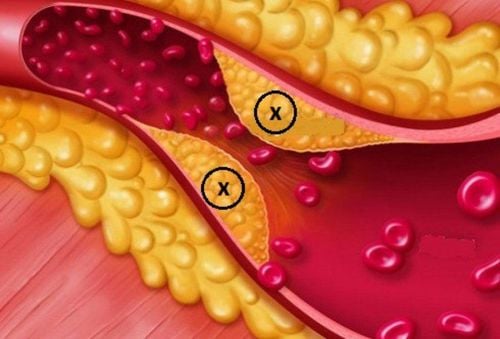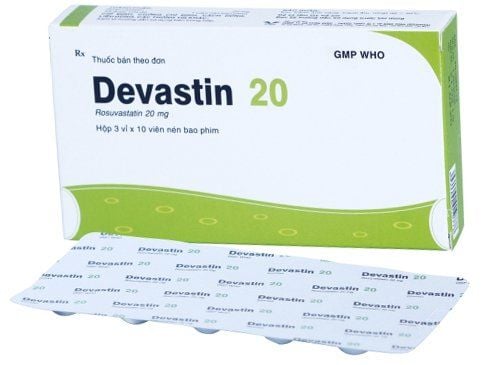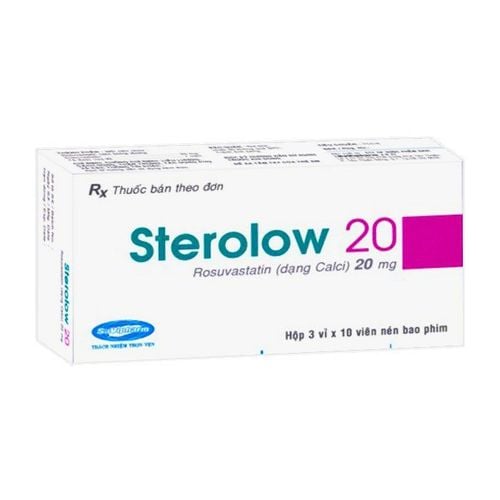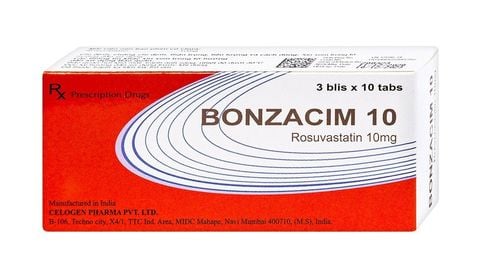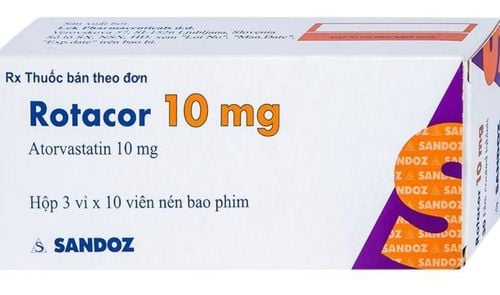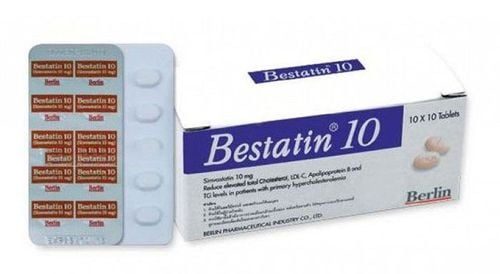This is an automatically translated article.
Aforsatin drug with the main ingredient is Atorvastatin 20mg, used to treat cholesterol. Here are some useful information about Aforsatin to help users refer to using the drug safely and effectively.
1. What is Aforsatin?
Aforsatin is a drug belonging to the group of cardiovascular drugs. Aforsatin is manufactured in the form of film-coated tablets and is packaged in boxes of 10 blisters x 10 tablets.Aforsatin medicine has the main ingredient Atorvastatin 20mg and some other excipients, just enough for 1 tablet.
2. What does Atorvastatin do?
Atorvastatin is indicated for treatment in the following cases:
Treatment to reduce Total Cholesterol, Apolipoprotein B, LDL-cholesterol and Triglycerides. Helps increase HDL-cholesterol in patients with primary hypercholesterolemia. Treatment for patients with beta-lipoproteinemia disorder when the daily diet cannot adequately meet the body's needs. Reduction of total cholesterol and LDL-cholesterol in patients with homozygous familial hypercholesterolemia on diet.
3. Dosage - How to take Atorvastatin
3.1. How to use Atorvastatin is made in the form of film-coated tablets, which are tolerated by the body orally, according to the tablet.
Atorvastatin can be taken at any time of the day, regardless of meals.
3.2. Dosage The dose of Atorvastatin depends on each subject and the course of the disease, there will be an appropriate dose. The following is a reference dose of Atorvastatin drug as follows:
For people with hypercholesterolemia and mixed dyslipidemia: Use Atorvastatin with the recommended starting dose of 10 - 20mg Atorvastatin orally once a day. In case patients need to reduce LDL cholesterol significantly (over 45%) can start with a dose of 40mg Atorvastatin taken once a day. The therapeutic dose range of the drug is 10 - 80 mg Atorvastatin once daily. After starting treatment with Atorvastatin or after increasing the oral dose, the patient needs to assess the blood lipid index within 2 to 4 weeks, from which the dose can be adjusted to suit each patient. . For people with homozygous familial hypercholesterolemia: The dose of Atorvastatin is 10 - 80mg/day. When using the drug, the patient should be combined with other lipid-lowering measures. Use Atorvastatin in combination with Resin to increase the effectiveness of treatment. For patients with renal impairment, it is not necessary to adjust the dose of Atorvastatin.
4. In what cases should Atorvastatin not be used?
Atorvastatin is not used in patients with hypersensitivity or history of allergy to HMG-CoA reductase inhibitors and its ingredients. Patients with persistent elevation of serum transaminases or with progressive liver disease of unknown cause. Pregnant and breastfeeding women are not recommended to use Atorvastatin.
5. Atorvastatin drug interactions
Here are some notes on the interaction of Atorvastatin with other drugs during the use of the drug:
When used together between anticoagulants, Indandione in combination with Atorvastatin will increase the bleeding time or Prothrombin time. In case the patient must be used in combination with anticoagulants, it is necessary to monitor the prothrombin time. If Atorvastatin is used in combination with Cyclosporine, Erythromycin, Gemfibrozil, immunosuppressive drugs, Niacin will cause an increased risk of myopathy. Atorvastatin used in combination with Digoxin will cause a slight increase in the serum concentration of Digoxin.
6. What side effects does Atorvastatin cause?
During the use of Atorvastatin, patients may experience some unwanted side effects such as:
Constipation, flatulence, indigestion. Abdominal pain, nausea, vomiting. Headache. In general, Atorvastatin is well tolerated by the body, and side effects are usually mild and transient.
7. Precautions when using Atorvastatin
When starting to use Atorvastatin to treat the disease, the patient should pay attention to exclude the causes of secondary dyslipidemia and quantitatively evaluate the Lipid index. periodically, with an interval of not less than 4 weeks. If the course of disease treatment with HMG-CoA reductase inhibitors. In case of increased creatine kinase, myositis or elevated serum liver enzymes 3 times the upper limit of normal, the dose of atorvastatin should be reduced or treatment discontinued. When using Atorvastatin for patients with liver dysfunction, patients who drink a lot of alcohol, it is necessary to pay attention to use the drug with caution. Before treatment with Atorvastatin, the patient should have a reasonable diet and should maintain this regimen throughout the course of treatment with the drug. Care should be taken to store Atorvastatin in a cool, dry place. Avoid light and direct sunlight. Note, Atorvastatin is prescribed by a doctor, patients should not arbitrarily take the drug without being prescribed to use it.




